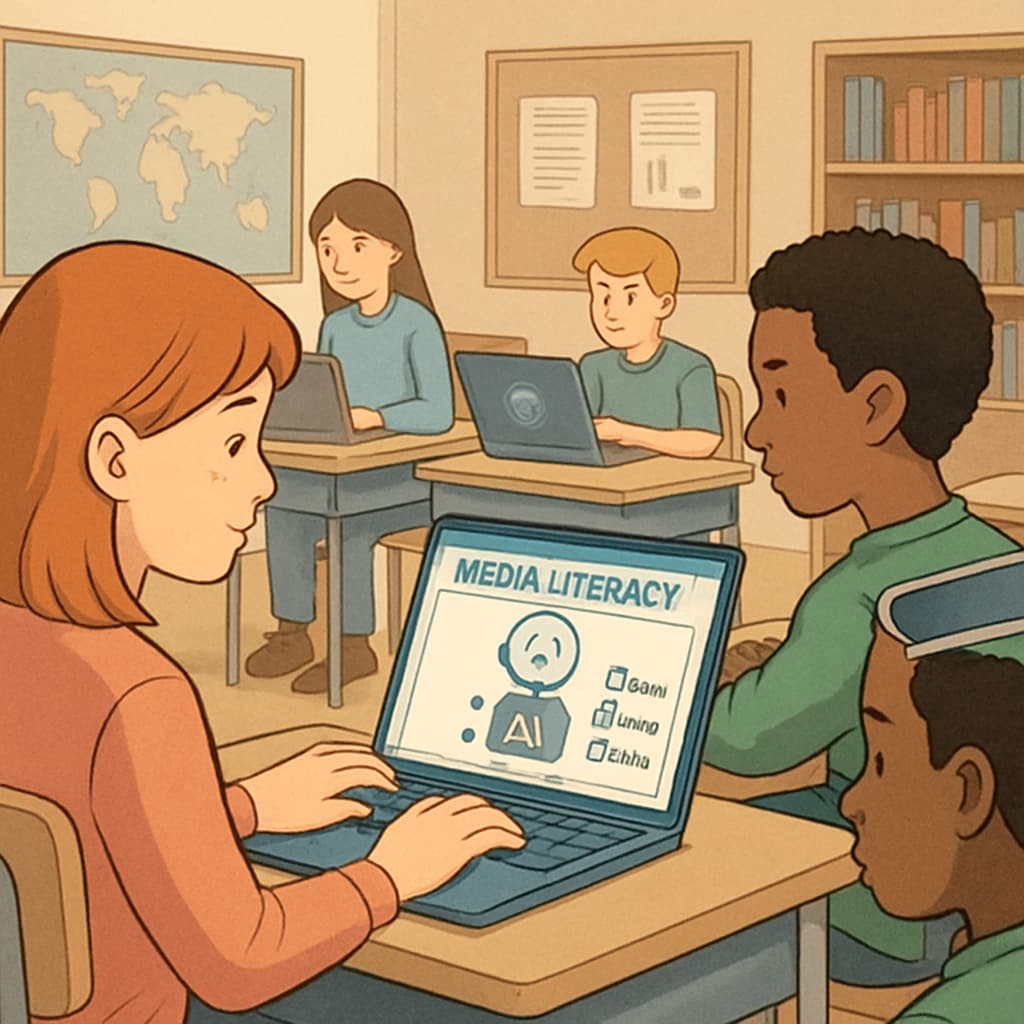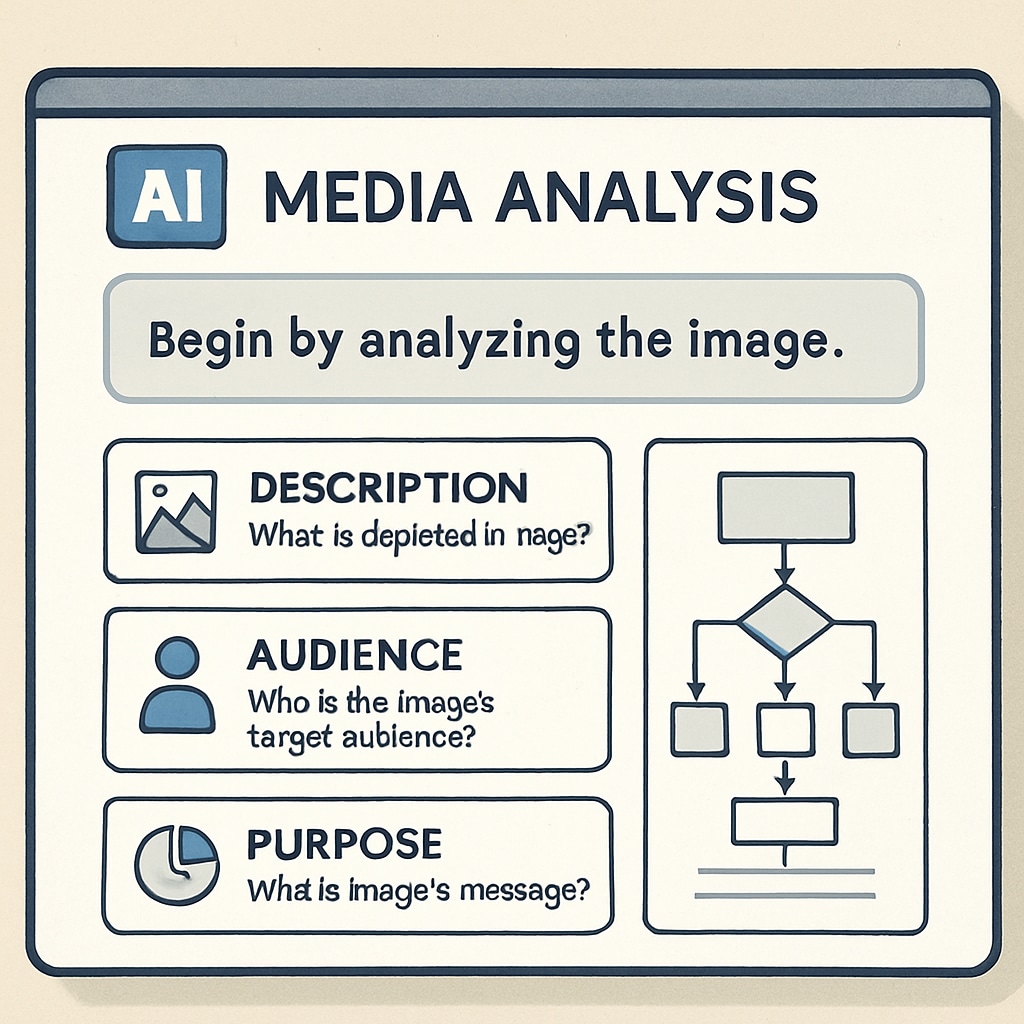The demand for media literacy education has grown exponentially as students navigate a digital world brimming with content. To meet this challenge, educators can now utilize “AI writing prompts, media literacy, teaching resources” to foster critical thinking and analytical skills in grades 9-12 classrooms. These free resources leverage AI tools like ChatGPT, offering structured prompts that guide students in analyzing film and media. With these tools, teachers can empower learners to decode messages, understand intent, and critically evaluate sources.
Why Media Literacy Matters in the Digital Age
Media literacy is the ability to access, analyze, evaluate, and create media in various forms. In today’s information-rich environment, developing this skill is essential for high school students. They encounter media daily—from social media posts to films, advertisements, and news articles. Understanding how these messages are crafted and the intentions behind them can prevent misinformation and promote informed decision-making.
For example, films often employ visual storytelling, music, and dialogue to evoke emotions and convey messages. Teaching students to unpack these elements not only enhances their viewing experience but also builds their analytical skills. AI writing prompts provide an efficient way to structure these lessons, ensuring students engage deeply with the content.

How AI Writing Prompts Enhance Media Literacy
AI-powered tools like ChatGPT offer unique opportunities for educators to enrich their curriculum. By integrating AI writing prompts into their lessons, teachers can guide students through structured analyses of media content. These prompts encourage students to think critically, ask essential questions, and develop well-rounded interpretations.
Here are some examples of AI writing prompts tailored for media literacy education:
- Analyze Intent: What is the filmmaker or creator trying to achieve? Identify the target audience and the intended message.
- Evaluate Persuasion Techniques: How does the media use visuals, sounds, or text to influence the viewer’s emotions or opinions?
- Compare Perspectives: Compare how two media pieces address the same topic. What biases or viewpoints are evident?
- Assess Credibility: What sources are cited? Are they reliable? How can you verify the accuracy of the information?
- Create Your Own: Using the techniques you’ve identified, craft a short media message targeting a specific audience.
These prompts align with educational goals by promoting critical thinking and ensuring students develop the ability to approach media content analytically.

Implementing AI-Powered Resources in High School Classrooms
Integrating AI tools into classroom instruction may seem daunting, but the process can be straightforward with the right approach. Educators can start by familiarizing themselves with AI platforms like ChatGPT and exploring their functionalities. Once comfortable, they can test writing prompts with small groups before scaling up to entire classes.
Additionally, teachers can incorporate group discussions, presentations, or creative projects alongside the AI exercises to deepen engagement. For instance, after analyzing a film using writing prompts, students can collaborate to produce a short video or infographic summarizing their findings.
AI tools also allow customization. Educators can modify prompts to suit specific genres, topics, or student needs—ensuring the lesson remains relevant and impactful.
Conclusion: Empowering Educators and Students
Free “AI writing prompts, media literacy, teaching resources” offer educators innovative ways to enhance their teaching while preparing students for the challenges of the digital age. By leveraging AI-powered tools, high school educators can equip learners with the critical thinking skills necessary to navigate complex media landscapes. Whether analyzing films, evaluating advertisements, or creating their own content, students will gain valuable insights that extend beyond the classroom.
Educators seeking to integrate AI into their curriculum can explore platforms like OpenAI’s ChatGPT (Learn more about ChatGPT) or other AI-powered tools to get started. By utilizing these resources, teaching media literacy can become an engaging and transformative experience for students and teachers alike.
Readability guidance: Use short paragraphs and bulleted lists to summarize key points. Maintain a conversational yet professional tone. Incorporate transition words like “however,” “therefore,” and “for example” for smoother flow and clarity.


